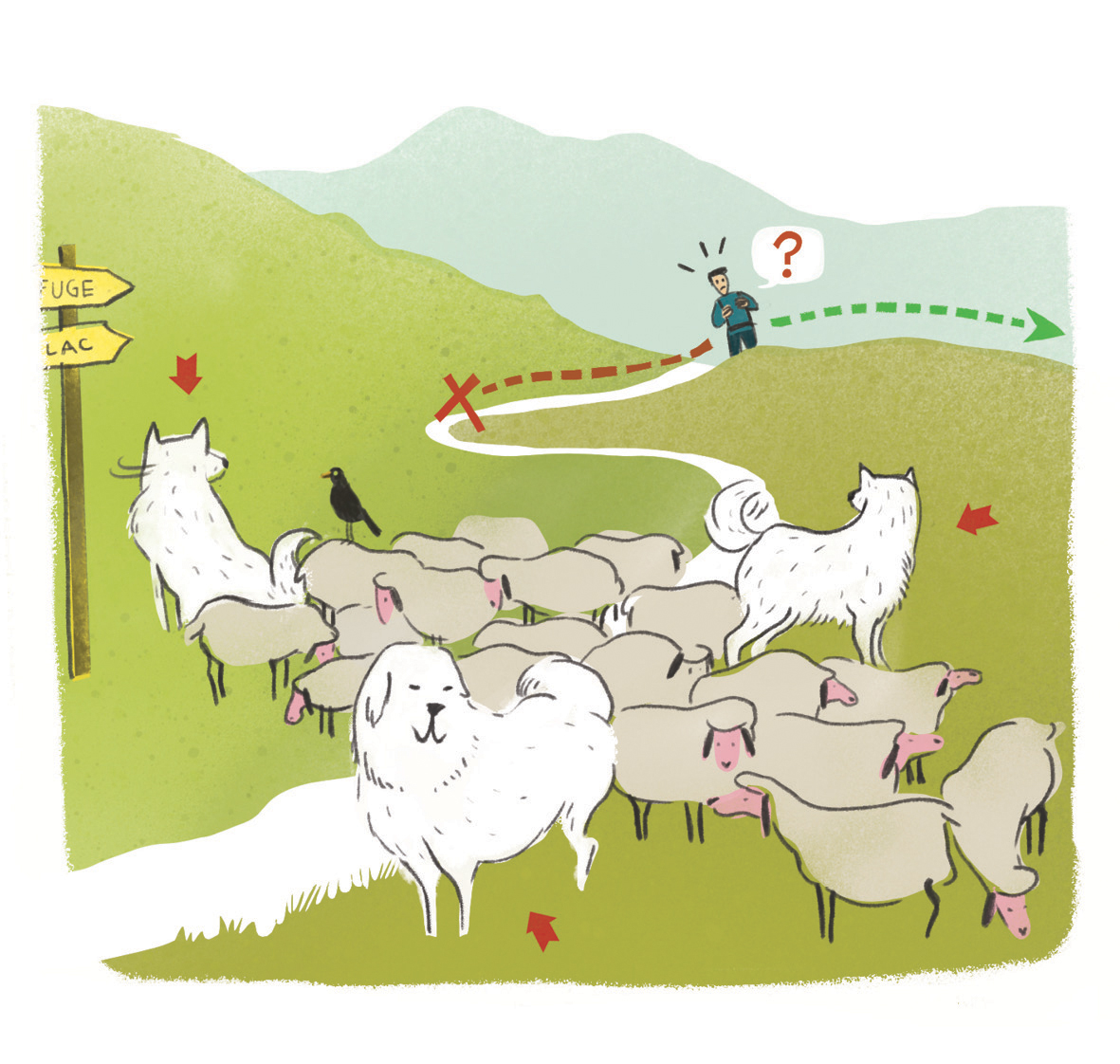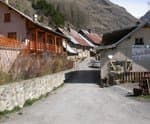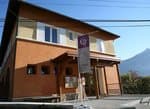Balcon de l'Oussella and Quille du Laus
Réallon MediumDifficulty
MediumDifficulty
Balcon de l'Oussella and Quille du Laus
6h
Duration10,7km
Distance+898m
Positive Elevation-896m
Negative ElevationLoop
Course typeNetwork
Network
Embed this item to access it offline
From cool beech and larch woods, past ancient hay meadows and the ruins of old mountain chalets, the path then climbs up to a balcony overlooking the Réallon valley. The final ascent to the Quille du Laus, a large cairn built on a high point, overlooks the deep gorge of the Chargès torrent on one side and the small Laus lake nestling in a valley on the other.
11 points of interest
 Flora
FloraMartagon lily
In the undergrowth at the start of the route, it is remarkable for its long, upright flowering stem. It has three to ten purplish-pink flowers dotted with purple, with long orange stamens. But admire it without breathing it in, because it's as smelly as it is beautiful! Flora
FloraBeech wood
These beech trees are almost the last to grow up the Durance valley. This tree can reach a height of 40m, with a smooth, slender, steel-grey trunk, horizontal branches and oval, full leaves with wavy edges and cilia. The fruits, called beechnuts, are encased in a spiky husk which opens in early autumn. Fauna
FaunaBlack woodpecker
This funny black bird with a red helmet and a long clear beak is the largest woodpecker in the Alps. It is hard to spot because it is very solitary and wary. Yet thanks to the many clues that reveal its presence, it is possible to identify its song and its very typical, sonorous calls. It pecks tirelessly to defend its territory or to find bark beetles or carpenter ants. History
HistoryFormer hay meadows and “rock hutches”
In the former hay meadows we passed through, the low walls and rock hutches bear witness to centuries of work by mountain dwellers. The stones removed from the fields would be piled up on the outskirts. The cut hay was taken down to the village in cloth sacks, loaded onto mules or sledges or the backs of men. Flora
FloraLarch
A high-altitude pioneer tree, its deciduous needles are fine enough to let light through. In autumn, they take on magnificent yellow-orange colours. In spring, its cones are a characteristic dark purple. Fauna
FaunaBlack Grouse
The black grouse, also known as the "Tetras Lyre", is a member of the galliform family. Of a similar size to a hen, the male boasts black plumage with blue highlights. The tail ends in the shape of a lyre. The more discreet female is dressed in brown and red. In winter, it burrows into the snow to avoid the cold of the night. It can spend long periods in this igloo if the weather is bad. Fauna
FaunaRock Ptarmigan
The rock ptarmigan, also known as the white partridge, is a bird of the galliform family. Its plumage is white in winter and brown in summer, providing effective camouflage. It lives above 2,000 m, where it prefers rocky grasslands, scree slopes and rocky ridges up to 3,000 m. The female lays 3 to 13 eggs on the ground, but harsh weather conditions and predators can destroy the clutch. Ptarmigan populations are on the decline. Fauna
FaunaChamois
The chamois is a close cousin of the antelope, bearing black, hooked horns. Emblematic of the Alps, the chamois is at home everywhere in the mountains, in forests and on rocky outcrops. Once disturbed, the chamois emits a high-pitched squeak from its nostrils. Herds consist of females and young, except during the rutting season when they are joined by the males. Fauna
FaunaRock partridge
The rock partridge is a galliform, like the black grouse. Perched on a promontory to sing its staccato song. It is recognisable due to its grey back, striped flanks, white throat and red beak. It lives in the mountains on slopes with good exposure to the sun and is fond of rocks and open moorland, where its young can feed on insects that are vital for their growth. Fauna
FaunaGreen lizard
This large, bright green lizard with black spots can grow to 40 cm. In the breeding season, the male can be distinguished by its blue throat. In the Écrins, it can reach an altitude of 2,000 m on the most exposed slopes. It is active from mid-March to mid-October, with some notable exceptions during mild winters. Fauna
FaunaShort-toed Snake Eagle
The Short-toed Snake Eagle is a large bird of prey, easily recognisable by its white underside and large, often chocolate-brown head. But it can be confused with some very light common buzzards. This trans-Saharan migrant feeds mainly on reptiles, which it hunts in steppe areas, scrubland, wasteland and rocky areas, but also in the mountains, even in alpine meadows. Its fairly small nest is often built in pine trees.
Description
From the car park, cross the bridge, and at the crossroads at the entrance to the hamlet, follow signs for Chargès up the road to the last house.
- Take the path on the right towards Oussella.
- After the Marmite de Géant and the bridge continue left towards L’Oussella. Cross the waterfall stream and keep to the main path through the beech forest. After a few hairpin bends, at the end of the larch grove, cross the old hay meadows and a stream. Cross the ravine and the stream of La Pissarotte to reach the foot of another area of old meadows that you will need to ascend (cairns and arrow).
- At the crossroads, turn left towards Le Laus.
- Take a left.
- At the entrance sign in the heart of the Ecrins National Park at a grassy shoulder, take a left on the ridge to the large cairn.
- Turn 180 degrees and head back down to the crossroads on the Oussella loop .
- Head towards les Gourniers via le Villard. Pass the old alpine chalets of Les Fuents (viewpoint) and descend towards Le Villard. Head along the edge of the ravine to the post (right arrow). After the series of hairpin bends, turn right in the field before the drinking troughs, then left 50 metres further down (small arrow post). Head alongside the “rock hutch” and continue along small hairpins (cairns). Cross the coombe and join the Sentier du Fort.
- Take the path on the right towards Les Gourniers.
- Once you reach the track, follow Les Gourniers to the right (red and white GR markings).
- At the top of a rise, leave the track by continuing straight ahead (post with arrow). Stay on the GR until you reach the road back to the car park.
- Departure : Parking des Gourniers, Réallon
- Arrival : Parking des Gourniers, Réallon
- Towns crossed : Réallon
Altimetric profile
Recommandations
Herd protection dogs
 In mountain pastures, protection dogs are there to protect the herds from predators (wolves, etc.).
In mountain pastures, protection dogs are there to protect the herds from predators (wolves, etc.).
When I hike I adapt my behavior by going around the herd and pausing for the dog to identify me.
Find out more about the actions to adopt with the article "Protection dogs: a context and actions to adopt".
Tell us about your meeting by answering this survey.
Information desks
Information center "les Gourniers" (summer only)
Les Gourniers, 05160 Réallon
Les Gourniers
05160 Réallon
Tel :
embrunais@ecrins-parcnational.fr
Maison du Parc de l'Embrunais
Place de l’Église, 05380 Châteauroux-les-Alpes
Information, documentation, exhibition, screenings, products and books of the Park. Accessible to people with reduced mobility. Free admission. All animations of the Park are free unless otherwise stated.
Transport
Consider carpooling: https://www.blablacar.fr/
Access and parking
From Savines-Le-Lac (17 km), take the D41 to Réallon. Follow the D241 to the hamlet of Les Gourniers at the bottom of the valley.
Parking :
Parking des Gourniers, Réallon
Source

Parc national des Ecrinshttps://www.ecrins-parcnational.fr
Report a problem or an error
If you have found an error on this page or if you have noticed any problems during your hike, please report them to us here:


